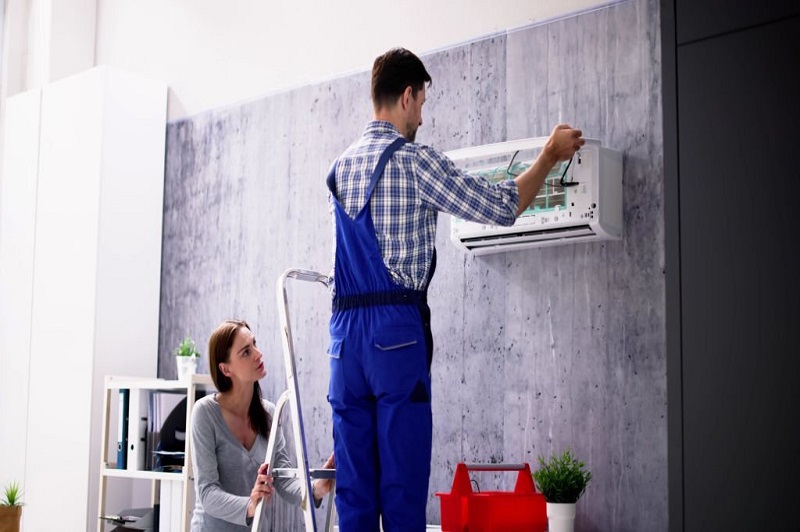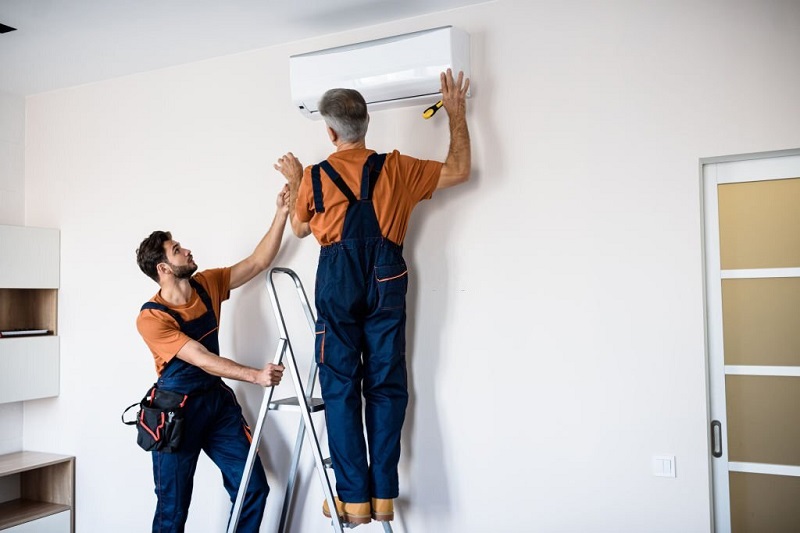Are you planning to install a new air conditioning system in your home or office? If so, you may not be aware that there are specific regulations and permits you need to obtain before proceeding with the project. These requirements are in place to ensure safety, proper installation, and energy efficiency. In this article, we will discuss the various regulations and permits you need to know when installing an air conditioning system, so you can have a hassle-free and successful project.
1. Local Building Codes and Regulations
When it comes to air conditioning installation, you must adhere to your local building codes and regulations. These codes vary depending on your location, but they typically cover aspects such as proper installation, electrical wiring, and ductwork. To find out the specific requirements for your area, you can consult your local building department or hire a licensed contractor who is familiar with the codes in your region.
 |
| Air Conditioning Installation |
- Proper clearance from property lines and neighboring structures
- Properly sized electrical circuits and wiring
- Sealed and insulated ducts to prevent energy loss
- Installation of a condensate drain line to remove excess moisture
Failure to comply with these requirements can result in fines, penalties, or even the removal of your air conditioning system. Therefore, it's essential to be aware of and adhere to your local building codes when planning your installation project.
2. Energy Efficiency Standards
In addition to local building codes, there are also energy efficiency standards that you need to consider when installing an air conditioning system. The U.S. Department of Energy has established minimum efficiency standards for HVAC systems, which vary depending on the type and size of the unit. These standards are designed to reduce energy consumption and greenhouse gas emissions, ultimately saving you money on your energy bills.
When selecting an air conditioning system, look for one with a high Seasonal Energy Efficiency Ratio (SEER) rating. The higher the SEER rating, the more efficient the unit, and the lower your energy costs will be. In many cases, local building codes will also require you to install a system with a minimum SEER rating.
3. Licensed Contractors
One of the best ways to ensure that your air conditioning installation project adheres to all necessary regulations and permits is by hiring a licensed contractor. A licensed contractor will be familiar with your local building codes and energy efficiency standards, ensuring that your installation is compliant, safe, and efficient.
When selecting a contractor, look for one who is licensed, insured, and experienced in air conditioning installation. You can also ask for references and read online reviews to ensure that you are choosing a reputable and reliable professional.
4. Permits and Inspections
Before you can begin your air conditioning installation project, you will likely need to obtain a permit from your local building department. The permit process ensures that your installation meets all safety and efficiency requirements, and it typically involves submitting an application, paying a fee, and waiting for approval.
Once you have obtained your permit, your installation will also need to be inspected by a building department official or a third-party inspector. This inspection will verify that your installation was completed according to code and that all safety and efficiency requirements have been met. If any issues are found, you will need to address them before the system can be used.
 |
| Air Conditioning Installation |
5. Proper Sizing and Installation
One of the most critical aspects of air conditioning installation is ensuring that your system is properly sized for your space. An improperly sized system can lead to reduced efficiency, increased energy costs, and even damage to the unit itself. To ensure your system is appropriately sized, a load calculation should be performed by a professional.
In addition to proper sizing, the correct installation of your air conditioning system is essential for its performance and longevity. This includes proper placement of the indoor and outdoor components, correct wiring, and appropriate ductwork. Hiring a licensed contractor will help ensure that your installation is completed correctly and in accordance with all applicable regulations and permits.
6. Safety Precautions
Throughout the installation process, it's essential to prioritize safety. This includes ensuring that all electrical work is completed by a qualified professional, properly securing the outdoor unit to prevent theft or damage, and following all manufacturer guidelines for installation and operation. By taking these precautions, you can protect yourself, your property, and your new air conditioning system.
Conclusion
In summary, understanding and adhering to air conditioning installation regulations and permits is crucial for a successful and hassle-free project. By familiarizing yourself with local building codes, energy efficiency standards, and safety precautions, you can ensure that your installation is compliant, efficient, and safe. Hiring a licensed contractor can also provide valuable expertise and peace of mind throughout the installation process. With proper planning and attention to detail, your new air conditioning system will provide you with years of comfort and energy savings.

.png)


No comments:
Post a Comment